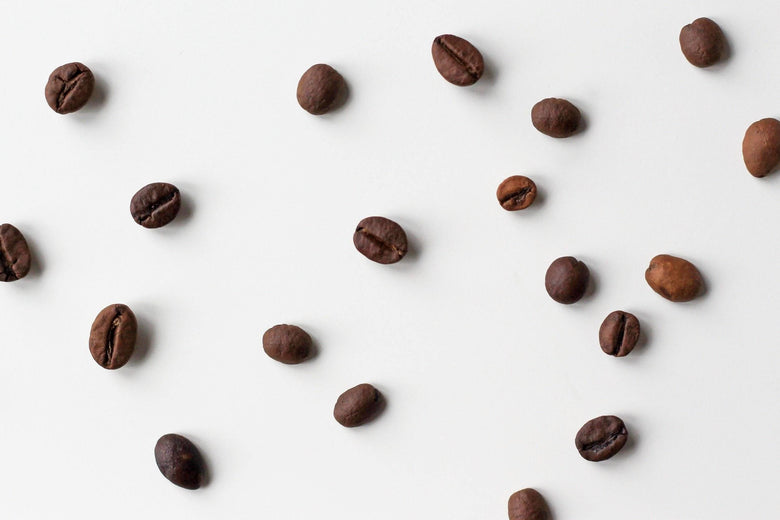Savor the Distinctiveness with Just-Roasted SOE Single Origin Espresso
Savor the Distinctiveness with Just-Roasted SOE Single Origin Espresso
Blog Article
Discovering the Rich Flavors of Coffee Beans: a Deep Study Espresso and Blended Coffee Beans
When you check out the rich tastes of coffee beans, you reveal a complicated globe where each variety brings its own personality to your mug. As you navigate via the art of coffee and the imagination behind blended coffees, you'll start to appreciate the subtleties that make each sip unique.
The Origins of Coffee Beans: Discovering Terroir and Taste Profiles
When you take a sip of coffee, you're not just enjoying a drink; you're experiencing a rich tapestry of tastes shaped by the beans' origins. Each area generates distinct flavor accounts influenced by altitude, soil, and environment. As an example, beans from Ethiopia usually rupture with intense, fruity notes, while those from Colombia often tend to use a well balanced, nutty sweet taste.
As you discover various origins, you'll discover how terroir-- the ecological aspects affecting a crop-- plays an essential function - Single Origin Espresso. The exact same coffee range can taste substantially various depending on where it's grown
When you take into consideration these factors, you begin to value the intricacy behind your cup. Each sip tells a tale of the land and the farmers that supported the beans. Next time you indulge, believe regarding the journey your coffee took prior to it reached your hands, and relish those complex tastes that reflect its beginning.
Understanding Espresso: The Art and Science Behind the Mixture
When you consider espresso, it's not nearly the strong flavor; it's also regarding the strategies that bring it to life. Recognizing just how different preparation methods effect taste can transform your brewing experience. Allow's explore the details of coffee prep work and reveal the one-of-a-kind taste profiles that make each mug special.
Espresso Prep Work Methods
Espresso preparation is both a scientific research and an art, incorporating specific methods with a deep understanding of coffee. To begin, you'll intend to pick top quality, fresh baked beans and grind them carefully for suitable extraction (Single Origin Espresso). The grind size is vital; too rugged, and your espresso will certainly be weak, as well fine, and it'll be bitter
The outcome must be a rich, creamy coffee with an attractive layer of crema on top. With practice, you'll grasp these methods.
Taste Accounts Described
The globe of coffee offers an abundant tapestry of flavor accounts that can boost your coffee experience. When you take that initial sip, you'll observe an equilibrium of sweetness, anger, and level of acidity. Each coffee bean lugs special notes, from flower and fruity to nutty and chocolaty. Light roasts frequently showcase brilliant acidity and vivid flavors, while dark roasts existing much deeper, bolder tones.
Understanding these profiles helps you choose the appropriate coffee for your palate. Explore various blends can reveal shocking combinations. A well-crafted mix could harmonize the bright notes of an Ethiopian bean with the rich, chocolatey touches of a Brazilian bean. Welcome the journey of uncovering coffee's diverse flavors, and you'll change your coffee routine into an interesting adventure.
Processing Techniques: How They Impact Taste and Aroma
While it could appear that the origin of coffee beans is the most considerable factor in determining their flavor and aroma, the handling techniques utilized post-harvest play a just as necessary role. You'll find that these approaches can drastically change the last preference profile of your mug.
For example, the washed process removes the fruit from the beans prior to fermentation, commonly causing a cleaner, brighter flavor. Meanwhile, the all-natural process leaves the fruit undamaged during drying, leading to a sweeter, fruitier account.
Other methods, like honey handling, strike a balance, enabling some fruit mucilage to remain, providing an unique intricacy.
Each processing strategy communicates with the beans' integral characteristics, improving or muting details flavors and aromas. When you sip that espresso or combined coffee, bear in mind that the journey from cherry to mug is influenced not simply by origin but likewise by how those beans were refined.
Roasting Methods: Opening the Full Potential of Coffee Beans
Roasting methods are essential for exposing the full capacity of coffee beans, as they transform raw, eco-friendly beans right into the fragrant, tasty coffee you enjoy. The selection of toasting technique-- light, medium, or dark-- dramatically influences flavor profiles. Light roasts protect the beans' natural level of acidity and fruity notes, while medium roasts balance sweet taste and richness. Dark roasts, on the various other hand, emphasize vibrant, great smoky tastes.
A slower roast at reduced temperature levels enables for complicated flavors to create, while a quicker roast can heighten anger. By mastering these methods, you'll disclose a globe of flavor, raising your coffee experience to brand-new heights.
The Magic of Blended Coffee: Producing Unique Taste Experiences
Producing a distinct taste experience with mixed coffee can transform your morning ritual into an exploration of preference. By incorporating various beans from various areas, you can reveal a symphony of tastes that raise your mug to brand-new elevations. Each blend deals a distinctive account, stabilizing level of acidity, body, and sweetness to produce something really special.
When you choose a blend, you're not simply selecting a coffee; you're choosing a journey throughout varied landscapes and cultures. Try out various combinations allows you to uncover your personal faves, whether you delight in fruity notes or abundant, chocolatey undertones.

Sampling Notes: Recognizing the Subtleties in Your Cup
As you drink your coffee, you may observe a range of flavors dancing on your taste buds, each revealing the complexities of the beans. You might taste the brilliant acidity similar to citrus or the deep, abundant notes akin to dark chocolate. The sweet taste could evoke honey or caramel, stabilizing the total account magnificently.
Take notice of the body of the coffee-- does it feel light and ventilated, or is it full and luscious? The finish, too, offers hints; a remaining aftertaste might hint at nuttiness or floral touches.

Do not neglect to check out the unique features of different beginnings, as each area imparts distinct flavors - Single Origin Espresso. Ethiopian coffees commonly present fruity notes, while Colombian beans may display an extra rounded sweetness. By identifying these subtleties, you'll deepen your recognition for every mug, elevating your coffee experience to brand-new heights

Brewing Methods: Making Best Use Of Flavor Removal for Every Bean
When you discover the different developing approaches, you'll find that each method can substantially influence the taste account of your coffee. From French press to pour-over, each approach essences various substances, enhancing or muting details notes. Making use of a French press allows oils to remain in the mixture, creating a richer taste, while pour-over emphasizes quality and illumination.
Temperature and grind dimension likewise play crucial functions. A coarser work functions best for cold mixtures, while a fine work is perfect for coffee. Explore water temperature-- in between 195 ° F and 205 ° F-- can reveal hidden tastes, as well.
Do not fail to remember about soaking time; a quick removal can lead to sour notes, while over-extraction may produce anger. By Single Origin Espresso readjusting these variables, you can maximize taste extraction and really boost your coffee experience. Take pleasure in the trip of uncovering what technique finest matches your taste buds!
Regularly Asked Questions
What Is the Ideal Water Temperature Level for Brewing Coffee?
The suitable water temperature level for developing coffee's in between 195 ° F and 205 ° F. If you use water that's too hot, you'll over-extract flavors; too cold, and you won't extract sufficient. Go for that wonderful spot for the finest mixture!
Exactly How Does Work Dimension Impact Coffee Flavor?
Work size significantly affects coffee flavor. Better grinds extract extra flavors and oils, leading to a bolder taste, while coarser grinds return a lighter flavor. Readjusting work dimension aids you achieve your preferred coffee profile.
Exist Wellness Advantages Linked With Drinking Coffee?

What Is the Difference Between Arabica and Robusta Beans?
Arabica beans are smoother and sweeter, commonly including fruity tastes, while robusta beans are stronger with a bitter taste and greater caffeine material. You'll notice these distinctions in scent and developing experience.
Exactly How Can I Store Coffee Beans for Freshness?
To save coffee beans for quality, keep them in an impermeable container, far from light, heat, and wetness. You'll keep their taste much longer if you just grind what you require right before brewing.
Checking Out the Rich Flavors of Coffee Beans: a Deep Dive Into Espresso and Blended Coffee Beans.
When you explore the rich flavors of coffee beans, you reveal an intricate globe where each range brings its very own character to your cup.When you take a sip of coffee, you're not just delighting in a drink; you're experiencing a rich tapestry of flavors formed by the beans' beginnings.Roasting methods are necessary for exposing the complete potential of coffee beans, as they transform raw, green beans right into the fragrant, tasty coffee you appreciate.As you drink your coffee, you may notice a spectrum of tastes dancing on your palate, each disclosing the details of the beans.
Report this page